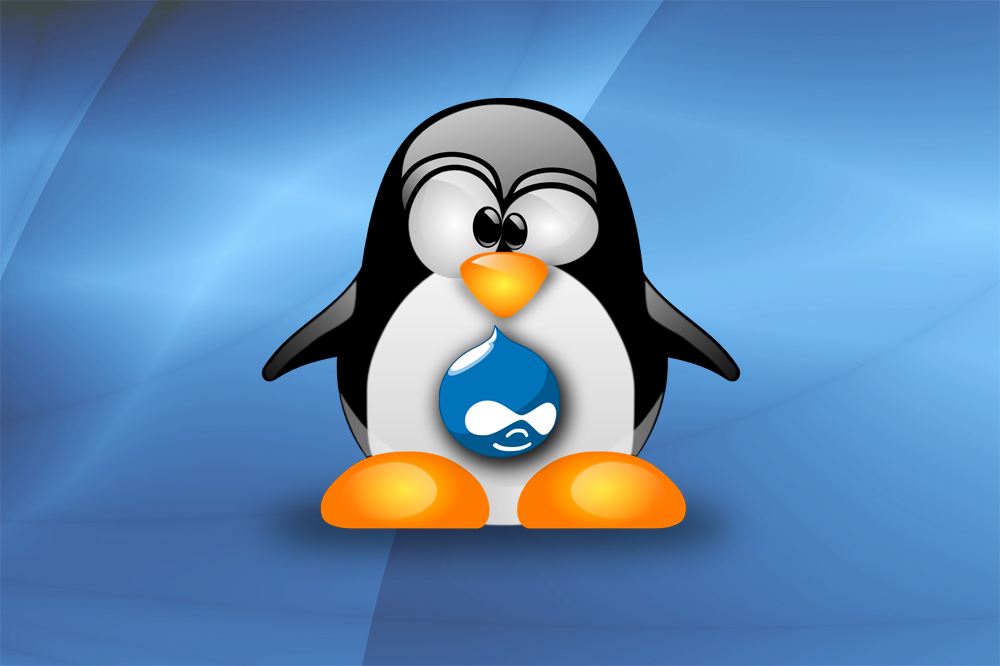In this post, the bases of creating environment for Drupal development on the basis of Debian 6 "Squeeze" will be described. Having this, everyone will be able to practice setting OS services, develop sites not depending on online servers.
Let's decide what our web development company need for this wonderful task:
1. Installed system, in our case Debian 6 "Squeeze" (I think there is no need to go into detail on installation of this system because there are more than enough articles on this subject in web). It is assumed that you know how to create folders from console, make links and install program packages.
2. Environment for Drupal:
2.1. Web server (e.g., Apache)
2.2. PHP
2.3. Database server (e.g. MySQL, PostgreSQL)
Before starting installation, let's see if there are no updates for our system, we'll launch corresponding commands for that:
drupal@debian6:~$ sudo apt-get update drupal@debian6:~$ sudo apt-get upgrade
Then we install Apache, PHP.
drupal@debian6:~$ sudo apt-get install apache2 apache2-doc php5 libapache2-mod-php5 php-pear drupal@debian6:~$ sudo apt-get install php5-curl php5-gd php5-idn php5-imagick php5-ldap php5-imap php5-memcache php5-mhash php5-mysql php5-ps php5-pspell php5-sqlite php5-suhosin php5-tidy imagemagick php5-xcache php5-xdebug php5-xmlrpc php5-xsl build-essential php5-dev bzip2
Activate rewrite module:
drupal@debian6:~$ sudo a2enmod rewrite
As Database server MySQL can be installed:
drupal@debian6:~$ sudo apt-get install mysql-server drupal@debian6:~$ sudo apt-get install mysql-client
Or instead of MySQL, MariaDB can be installed:
drupal@debian6:~$ sudo apt-key adv --recv-keys --keyserver keyserver.ubuntu.com 1BB943DB drupal@debian6:~$ sudo nano /etc/apt/sources.list.d/mariadb.list
And add two lines into the file
deb http://mirror.de.gsnw.de:56431/mariadb/repo/5.2/debian squeeze mai
deb-src http://mirror.de.gsnw.de:56431/mariadb/repo/5.2/debian squeeze main
drupal@debian6:~$ sudo apt-get update drupal@debian6:~$ sudo apt-get install mariadb-server
If you don't really like working with console, you can install phpmyadmin for the work with bases:
drupal@debian6:~$ sudo apt-get install phpmyadmin
Now you can see it at http://localhost/phpmyadmin (if you work at one computer) or at http://your_ip/phpmyadmin (if environment is at a remote computer).
your_ip - is IP-address where everything is installed.
Instead of writing long name, it can be shortened from http://localhost/phpmyadmin into http://localhost/pma. You must edit configuration file for that
drupal@debian6:~$ sudo nano /etc/phpmyadmin/apache.conf
in Alias line /phpmyadmin usr/phpmyadmin change /phpmyadmin into /pma or any other convenient name, and restart apache:
drupal@debian6:~$ sudo /etc/init.d/apache2 restart
Now when everything is installed, you can start setting directories, virtual hosts and permissions for folders.
On default, we'll keep all our sites in /var/www folder, but permissions for it are only for root. Let's change them for our user:
drupal@debian6:~$ sudo chown -R drupal:drupal /var/www
To check PHP work, we'll use phpinfo
drupal@debian6:~$ sudo nano /var/www/phpinfo.php
Insert
phpinfo();
And check its work at http://localhost/info.php
We'll change PHP settings for our work:
drupal@debian6:~$ sudo nano /etc/php5/apache2/php.ini
change parameters:
max_execution_time = 90 (script execution time in seconds)
post_max_size = 32M (maximum size that is transfered by POST requests)
upload_max_filesize = 50M (maximum filesize that can be uploaded, which is very convenient if database is imported through phpmyadmin)
To accelerate work of PHP scripts, install eAccelerator
drupal@debian6:~$ sudo apt-get install build-essential php5-dev
Create category for cache and define permissions for it:
drupal@debian6:~$ sudo mkdir -p /var/cache/eaccelerator drupal@debian6:~$ sudo chmod 0777 /var/cache/eaccelerator
PHP 5.3 on default is installed with XCache support. For eAccelerator to work appropriately, you must move XCache from modules
drupal@debian6:~$ sudo mv /etc/php5/conf.d/xcache.ini ~/
Restart Apache2
drupal@debian6:~$ sudo /etc/init.d/apache2 restart
Check if eAccelerator is present in PHP
drupal@debian6:~$ php -v
PHP 5.3.3-7+squeeze1 with Suhosin-Patch (cli) (built: Mar 18 2011 17:22:52)
Copyright (c) 1997-2009 The PHP Group
Zend Engine v2.3.0, Copyright (c) 1998-2010 Zend Technologies
with eAccelerator v0.9.6.1, Copyright (c) 2004-2010 eAccelerator, by eAccelerator
with Xdebug v2.1.0, Copyright (c) 2002-2010, by Derick Rethans
with Suhosin v0.9.32.1, Copyright (c) 2007-2010, by SektionEins GmbHThen we create virtualhost for our project (copy default virtualhost for your site):
drupal@debian6:~$ sudo cp /etc/apache2/sites-available/default /etc/apache2/sites-available/drupal7 drupal@debian6:~$ sudo nano /etc/apache2/sites-available/drupal7
It should look the following way:
<VirtualHost *:80>
ServerAdmin webmaster @ localhost
ServerName drupal7.loc
DocumentRoot /var/www/drupal7
<Directory />
Options FollowSymLinks
AllowOverride All
</Directory>
<Directory /var/www/drupal7/>
Options Indexes FollowSymLinks MultiViews
AllowOverride All
Order allow,deny
allow from all
</Directory>
ErrorLog ${APACHE_LOG_DIR}/error.log
LogLevel warn
CustomLog ${APACHE_LOG_DIR}/access.log combined
</VirtualHost>
We enable our site (make virtualhost active):
drupal@debian6:~$ sudo a2ensite drupal7
Restart Apache2 to activate VirtualHost settings for our site.
drupal@debian6:~$ sudo /etc/init.d/apache2 restart
If you work at one computer, you can use /etc/hosts file, where you will link URL of your project to our IP.
drupal@debian6:~$ sudo nano /etc/hosts
Add a line there:
127.0.0.1 drupal7.loc
Then go to /var/www/ and unpack Drupal into a folder, drupal7 for installation. After we put http://drupal7.loc/ into address line - window of Drupal installation will be opened.
As a result, Drupal developers have an environment on which some time was spent, but now we can do our favorite business of developing projects.
